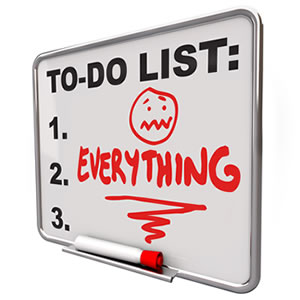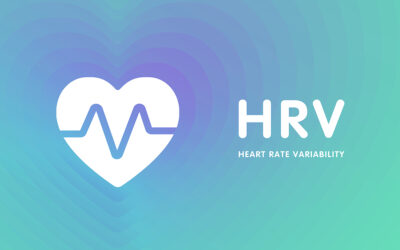Are you perpetually making to-do lists–but find yourself unable to complete the tasks efficiently?
Additionally, do you often feel lost and overwhelmed with your responsibilities, and despite being continuously busy, perceive you are not making progress in the important aspects of your life?
Or, are you totally drained at the end of each day and unsatisfied with what you have accomplished?
 If you answered YES to one or more of these questions, you probably have a disorganized and distracted mind. The key to being more productive everyday rests not in external structure and tidiness–a spotless desk, detailed day planner, or multiple reminders. Instead, it rests in a clean mind. A mind that is free of clutter. In other words, one that is able to nimbly shift topics and focus solely and acutely on one task at a time.
If you answered YES to one or more of these questions, you probably have a disorganized and distracted mind. The key to being more productive everyday rests not in external structure and tidiness–a spotless desk, detailed day planner, or multiple reminders. Instead, it rests in a clean mind. A mind that is free of clutter. In other words, one that is able to nimbly shift topics and focus solely and acutely on one task at a time.
That’s right, Multitasking Doesn’t Work! Our brains are not designed to attend to more than one cognitive endeavor at a time. When we try to do multiple things at once, it divides the mind, adding to our feelings of chaos, overwhelm and mental exhaustion. Also, when we attempt to do simultaneous tasks, we are less engaged with each, which often leads to a lower quality product and more mistakes.
In the course, organize your mind®, Wellcoaches founder Margaret Moore describes a “crisis of brain performance” in which our minds suffer from being “too busy, [under] too much pressure, depleted, frenzied, distracted, addicted, [and] disorganized.” In modern society our brains are pulled to react to many stimuli at once–email/phone/text, work deadlines, co-worker interactions, family obligations, social media, external noise, personal needs and more.
Take a moment now to visualize your typical day. Here’s a snapshot of my day. I am sitting at my computer, trying to channel all of my mental power on writing this article. As I do, there are multiple distractions battling for my attention: email notifications flashing across my screen, dogs barking, text alerts, a delivery man dropping off a package, the dryer buzzing, a nagging thought that I need to walk the dogs soon, and my dad calling … With all this extraneous stimuli to occupy my brain, it is a wonder I ever get anything done! And, I’m not alone. You have as many or more demands on your ability to concentrate without interruption.
During a typical day, our minds become completely overloaded. As a result, they do not work optimally, causing many challenges. As Moore states, we “struggle to focus, remember, think, connect, collaborate, create, learn, strategize, be present, and be agile.” The book Organize Your Mind: Organize Your Life, authored by Moore as well as Harvard Psychologist Dr. Paul Hammerness, offers a solution to our disorganized and distracted minds, using the “Six Rules of Order.”
- Tame the Frenzy
- Sustain Attention
- Apply the Brakes
- Mold Information
- Shift Sets
- Connect the Dots
1. Tame the Frenzy
As I depicted earlier, your mind has many things competing for your attention, creating mental turmoil. When your mind is a jumble, your emotions are likewise negatively affected. Negative emotions such as sadness, anger, frustration, stress and anxiety reduce your ability to focus and to be productive. Consider, for example, how effective you are on the job when you are worried about the health of a family member, are fretting over your in-laws visit for the holidays, or are irritated that your work wasn’t appreciated by your supervisor.
Taming the frenzy is about establishing a calm, positive mindset. Moore suggests the following strategies to find mental peace.
- Exercise
- Meditate
- Mindfulness Practices
- Breathe
What are you doing to tame your frenzy? What new habit might you start today?
2. Sustain Attention
To achieve your goals, you must be able to direct all of your mental resources on a single task for a continuous duration. The optimal state of attention is flow. You can read more about flow in my blog, Flow Experience, the Zone and Optimal Performance. The more often you can attain a state of flow, the more you will accomplish. However, the average person can only concentrate for about an hour at a time. So, you want to strive for several sessions of sustained attention/flow throughout your day.
As described in the Wellcoaches course, organize your mind®, the brain has many different states, 12 to be exact: Meta Awareness, Collaborate, Rapport, Peak Flow, Mind Wandering, Nonlinear, Strategic, Think, Imagine, Open Awareness, Evaluate and Embodied Learning. All of these states are important and should be visited regularly. As I studied this information, I found that my brain tended to reside in only a few brain states. I almost never went into the brain states Nonlinear or Imagine, and I was barely aware of entering others. This was an Aha! moment for me. It was liberating to learn that sitting in the sun and appreciating nature for a few minutes in a state of open awareness was beneficial to my brain. Thus, in order to keep my brain healthy and balanced, I need to let go and let my mind wander. Since I’m a driven type-A personality, I didn’t appreciate many of the brain states that, to me, seemed wasteful. With this new knowledge, though, I can relieve myself of guilt when I take my dogs for a walk and follow their example of immersing myself in sensations.
This was an Aha! moment for me. It was liberating to learn that sitting in the sun and appreciating nature for a few minutes in a state of open awareness was beneficial to my brain. Thus, in order to keep my brain healthy and balanced, I need to let go and let my mind wander. Since I’m a driven type-A personality, I didn’t appreciate many of the brain states that, to me, seemed wasteful. With this new knowledge, though, I can relieve myself of guilt when I take my dogs for a walk and follow their example of immersing myself in sensations.
Do you tend to use a few brain states predominantly?
 Find out by taking the brainsets quiz, offered by Dr. Shelley Carson, Harvard Psychologist and author of Your Creative Brain. My results showed that I was twice as likely to use my reason brainset over any other state, and that I employed a deliberate approach three times more often than being spontaneous.
Find out by taking the brainsets quiz, offered by Dr. Shelley Carson, Harvard Psychologist and author of Your Creative Brain. My results showed that I was twice as likely to use my reason brainset over any other state, and that I employed a deliberate approach three times more often than being spontaneous.
Moore advocates taking “brain breaks”: letting the brain go into alternate states throughout the day to recharge your brain. At first, you may have to make a conscious choice, like I did, to enter these other mindsets. With repetition, however, it will become more automatic.
3. Apply the Brakes
As you know, distractions happen! Applying the brakes refers to using cognitive restraint when confronted with a situation that may divert your focus. In order to do this, Moore suggests following the ABCs for dealing with distractions.
A – Awareness: First, realize that something else is vying for your attention and will possibly lead you off course.
B – Breathe: Then, take a deep breath to calm your mind.
C – Choose: Finally, realize you have options when a distraction occurs, and choose appropriately:
- Engage with the distraction
- Stay focused
- Take a break
Another strategy that has worked well for me is to set time limits for tasks. Because I know that I will inevitably encounter distractions, I strive to work on a specific project for a minimum of 30 minutes or perhaps an hour. While attempting to focus, I know I will be tempted to read email, look up something on the web, or respond to extraneous new stimuli. However, in these instances I remind myself of my objective. Then I refocus. Eventually, it will be time for a brain break, when I can engage in those other activities.
4. Mold Information
To reach your goals, changes are required in your thoughts and subsequent actions. Molding information is about creating new ideas, strategies and perspectives. The source of the information you will mold together is stored in your working memory. Unfortunately, if you are constantly distracted, your ability to remember declines. To best utilize your working memory, Moore offers the following suggestions:
- Take notes of important information
- Sleep adequately
- Exercise regularly
- Listen to and debate contrasting points of view
I have learned not to make important decisions before sleeping on the information. It is amazing to me how very different things can appear in the morning after my working memory has had time to assimilate the pieces during the night.
5. Shift Sets
Your brain needs to be flexible, curious and adaptable. Unfortunately, a sign of aging is a rigid mindset that is stuck in a single way of viewing the world, lacking the willingness or ability to entertain different opinions and options. And because things rarely go as planned, we need to easily accommodate to the new circumstances. If you have an organized mind, you can shift sets completely, which allows you to transfer all of your mental capacities from one task to the next. Since you are not trying to multitask–since you are letting go of lingering thoughts about what you were doing or what needs to be done–you can immerse yourself fully in the current situation.
To do this, Moore recommends shifting sets from the mental to the physical. She suggests that before you start that next endeavor, you move your body. Many times this will cause you to have new ideas and to make new connections. To illustrate, think: Have you ever had the solution to a problem pop into your head while walking, jogging or riding your bike? This is an example of the power of set shifting.
6. Connect the Dots
The final rule is where learning happens and you are able to make lasting changes. At this point, new neural networks are established in the brain, habits are transformed, and goals are achieved.
Summary
So, as the new year approaches, I encourage you not to set resolutions about cleaning up your environment or buying a better calendaring system to improve your organization. Instead, to achieve your goals in 2017, I recommend taking an inward approach and clearing the clutter in your mind. The more you can block out distractions and the better you can focus, the more your organization and productivity will soar.
Wishing you an organized mind in 2017!




